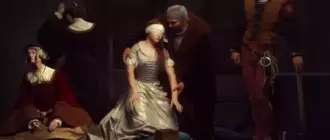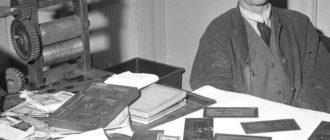
Anyone who has visited ancient palaces and mansions has probably noticed the beautiful columns, which at first glance seem to be carved from marble. In some cases this is true, but most often in interior design they used artificial marble, made using a technology called scagliola.


Artificial marble, the predecessor of modern decorative plaster, was created from burnt and crushed gypsum (alabaster) with the addition of natural minerals, binders and dyes. This method has been used to imitate expensive marble of various colors since the 16th century. The term comes from the Italian word scaglia – scale, scaly. This was also the name of a transparent variety of the mineral selenite, mined in the Italian Alps, which was used as a filler for plaster mixtures. Scagliola became known in Italy as l’arte della pietra di luna due to the fact that selenite resembles the color of the moon when held up to the light. To give a marble shine, the surface was smoothed with pumice, polished with linen cloth and charcoal, and then with oiled felt or beeswax.


The inventor of the technique is considered to be the master Guido Fassi (1584-1649) from the city of Carpi in the Emilia-Romagna region, which became the capital of this craft. Here altar panels, paintings, panels, shelves and tabletops were created using the scagliola technique. Scagliola panels were used to decorate furniture, chests and caskets.

In the 18th century, the center of the craft moved to Florence, where, under the patronage of the Dukes of Tuscany, scagliola developed parallel to the art of Florentine mosaic. Using techniques of inlaying the background with plaster masses of different colors, scagliola masters approached the art of painting in their craft. A special role in this belonged to the brothers Enrico (1695-1771) and Ignacio Hugford (1703-1778), the sons of an English watchmaker who was a committed Catholic and left London with his wife around 1686 to start a new life in Papal Italy. Hugford settled in Florence, where he received the position of “Aiutante di Onore” (honorary assistant) at the court of Grand Duke Cosimo III de’ Medici (1642-1723).


Ignacio Hugford is known as a painter, critic, art historian and collector, member of the Accademia delle Arti del Disegno (“Academy of the Arts of Drawing”) in Florence. In 1745, he painted more than a dozen paintings for the refectory of the Benedictine Abbey of Vallombrosa, where his brother Ferdinando Enrico became abbot.
Enrico Hugford entered Vallombrosa Abbey as a monk in 1711. Trained in the art of scagliola by the monks of the Abbey of Santa Reparata in Marradi, he returned to Vallombrosa, where his talent was soon appreciated and recognized. His refined technique allowed him to achieve much greater expressiveness than his predecessors. He used a wide range of subjects, including landscapes, sea and river scenes with architecture and figures, flowers, animals, genre scenes, portraits and lives of saints. A collection of his works can be seen in the Vallombrosa Abbey Museum.


Hugford’s method of making scagliola is described in an unpublished report by his student Lamberto Gori (1730–1801): “This material, called scagliola or Specchio d’asino, is calcined or loosened by heat, ground into a very fine powder, and it is then turned into a paste that can be rolled into slabs of various shapes and sizes.
Once the piece of paste has hardened, indentations are made in the surface according to the design or pattern to be depicted and then inlaid with fresh paste mixed with whatever colors are needed for the image. Only with extreme hard work and patience can such painstaking work be brought to perfection. The purpose of this technique is to imitate the art of painting, to create in colored scagliola, with a sufficient degree of naturalism, landscapes, marinas, flowers, fruits, animals, etc., and even, what should be most surprised and admired, human figures. Once completed, the surface of the scagliola image can be polished, thus hiding all traces of the inlay technique.


Indeed, scagliola paintings are often confused with paintings under glass. Scagliola is so hard that it can be used for floors, and so durable that it is often used for tombs and church monuments. But its most attractive quality is its polishing, which gives it such an exquisite and precious look.”

Over time, the scagliola technique spread throughout Europe. The scagliola panels on this cabinet are almost certainly the work of Baldassare Artima, an immigrant Italian craftsman who worked in England between 1670 and 1686. He was one of two Italians enrolled as artists in the Royal Theater company in 1670, the other being Diacinto Corsi. When the theater was destroyed by fire in January 1672, they had to find new work. Artima remained in London, where he found wealthy patrons such as the Duchess of Lauderdale and Sir John Williams, whose house in St James’s Square was remodeled under his direction. Corsi went to Suffolk. The scagliola monuments in the churches of Homestead, Mildenhall and Westthorpe are his work.

As the scagliola technique was honed by skilled craftsmen, its plasticity and versatility allowed them to use a variety of decorative techniques imitating Florentine mosaics (pietre dure), embroidery, lace, ivory inlay, stucco and even oil paintings. Over time, this material began to be valued as much, if not more, than marble itself.

























